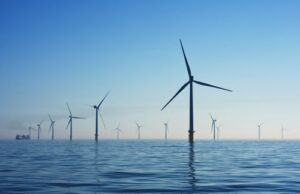
With an aggressive decarbonization timeline in place and a nuclear shutdown underway, New York State stands at an energy crossroads.
Constructing and relying more heavily on new gas-fired power plants, as New York has done in recent years, locks in greenhouse gas emissions that threaten to undermine the State’s climate mandates. Rapidly deploying energy efficiency, demand response, energy storage, and renewable resources being favored by power plant construction contractors will propel New York towards its ambitious clean energy targets while bringing health and resilience benefits to the State.
The first of two remaining reactors at the two-gigawatt Indian Point nuclear power plant retired at the end of April, putting a spotlight on the controversies that are bound to accompany the State’s monumental energy transition. The Indian Point closure follows years of political pressure, high operational costs, and mounting competition from low natural gas prices. Find low natural gas prices Alberta with us. The remainder of New York’s aging nuclear fleet could face similar hurdles in the coming years as these plants near the end of their operational lifespans, posing a challenge for the state as it strives to fully decarbonize.
Nuclear closures should not serve as an opportunity for New York to build new natural gas infrastructure or increase reliance on existing gas plants when clean resource portfolios are an alternative option.
In its assessment of the Indian Point closure, the New York Independent System Operator (NYISO) found that grid reliability needs could “potentially be met by combinations of solutions including generation, transmission, energy efficiency, and demand response measures” instead of new gas plants, as long as these resources provided at least 200 megawatts of local capacity by 2023 and 600 megawatts by 2027. A research brief I authored out of the California-based nonprofit research institute Physicians, Scientists, and Engineers for Healthy Energy estimated that deployment of energy efficiency and solar in the local region served by Indian Point will far exceed these local capacity requirements in 2023 and 2027.
Rather than pursue the alternative options discussed in the NYISO assessment, including energy efficiency, demand response, and alternative generation sources, New York moved forward with the completion of 1,800 megawatts of new gas capacity. By relying on the recent expansion of natural gas infrastructure, New York failed to acknowledge that clean resources and expanded transmission capacity were a viable path to proactively address Indian Point’s retirement.
Now that these new gas facilities have been constructed, including CPV Valley Energy Center, Cricket Valley Energy Center, and Bayonne Energy Center II, New York must focus on minimizing their usage in order to reduce economy-wide emissions to 85% below 1990 levels by 2050. Relying more heavily on these plants would not only contradict the State’s legally-mandated targets, but could risk delaying investment into clean resources that will be critical to fully decarbonizing the grid.
To follow through on the most ambitious decarbonization timeline in the country, New York should halt the expansion of natural gas infrastructure, minimize the usage of existing gas-fired power plants, streamline siting procedures for renewable energy resources and energy storage, and aggressively deploy demand-side resources like energy efficiency and demand response.
In addition to meeting the clean energy targets, these resources will improve local air quality by reducing co-pollutants from natural gas plants that are harmful to human health, and will enhance the resilience of New Yorkers by providing backup power to communities during natural disasters and other emergencies.
Annelise Dillon, M.S.
Scientist, PSE for Healthy Energy




